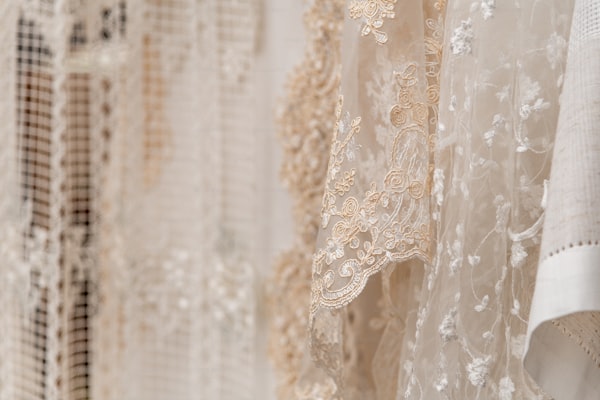Mastering the Art of Wedding Dress Production: Managing Unique Fabric Textures
Mastering the Art of Wedding Dress Production: Managing Unique Fabric Textures
How Do You Manage the Production of Wedding dresses with Unique Fabric Textures?
Wedding dresses are not just garments; they are emblems of dreams, love, and commitment. With brides increasingly seeking personalization, the demand for dresses made from unique fabric textures has surged. But how do manufacturers navigate the complexities of producing these exquisite pieces? This article will unravel strategies used in the production of Wedding dresses, especially when it comes to unique fabric textures, and share some insights on managing this process efficiently.
The Importance of Unique Fabric Textures
The wedding dress is a bride’s centerpiece, and the fabric plays a vital role in its overall aesthetic. Unique fabric textures such as lace, tulle, silk, and chiffon can significantly affect the final look and feel of a gown. Here’s a brief overview of popular fabric types used in Wedding dresses:
| Fabric Type | Description | Unique Qualities |
| Lace | A delicate, intricately woven fabric. | Highly decorative, adds elegance. |
| Tulle | A lightweight, sheer fabric often used for overlays. | Creates volume and ethereal looks. |
| Silk | A luxurious, smooth fabric known for its sheen. | Soft drape and high comfort level. |
| Chiffon | A lightweight, semi-sheer fabric. | Flowy movement and layered looks. |
Unique fabric textures not only enhance visual appeal but also contribute to the emotional experience of a wedding—each type can evoke different memories and sentiments for the bride.
Managing Production: Key Factors to Consider
Producing Wedding dresses with unique fabric textures involves several critical factors, including design innovation, grade quality, supplier reliability, and efficient production processes. Below are some essential strategies manufacturers can implement:
Collaboration with Designers
To create a wedding dress that truly resonates with brides, manufacturers must work closely with designers. Effective collaboration ensures that both parties understand the vision and requirements for the unique fabric textures desired.
Quality Control
Quality assurance is vital. This involves thorough inspection of fabrics prior to production. For instance, checking for imperfections in lace or ensuring silk has the right weight and sheen can make a substantial difference in the final product.
Supplier Relationships
Building strong relationships with suppliers is invaluable. Reliability is crucial, as delays in fabric delivery can derail production schedules. Establishing clear communication channels and setting expectations can help mitigate risks.
Technology in Production
Utilizing modern technology can streamline production. Tools such as CAD (Computer-Aided Design) software allow designers to visualize how different fabric textures will work together before any actual sewing begins. Additionally, laser cutting and digital printing technologies can enhance creative possibilities.
Designing with Unique Fabrics: Tips and Best Practices
Here are some best practices when designing Wedding dresses with unique fabrics:
Research and Trends
Staying updated on fabric trends in the bridal wear market is crucial. Engaging in research, attending bridal fairs, and networking with fabric innovators can unveil new opportunities.
Understand Fabric Characteristics
Each fabric comes with its own set of characteristics; understanding these is essential for effective design. For example, lace may require more careful handling than silk, and knowing how each texture behaves can prevent logistical challenges down the road.
Prototyping
Before final production, creating prototypes can help identify potential issues. This includes testing the comfort of the fabric against different body types and understanding how it reacts under various conditions (e.g., humidity or movement).

From Concept to Completion: The Workflow
The journey from idea to finished dress involves meticulous planning. Here is a simplified workflow to manage production efficiently:
- Design Development: Brainstorm and collaborate with designers to finalize concepts that incorporate unique fabrics.
- Material Sourcing: Identify and source unique fabrics that align with the design vision and budget.
- Pattern Making: Develop patterns that highlight the unique textures of the chosen fabrics.
- Sewing and Assembly: Engage skilled labor to sew and assemble the Wedding dresses, ensuring quality craftsmanship.
- Quality Inspection: Conduct a thorough inspection of the finished products to maintain quality standards.
- Delivery: Coordinate with logistics to deliver the finished dresses on time.
Addressing Challenges in Fabric Production
While producing Wedding dresses with unique fabric textures, manufacturers often face various challenges. Below are some common ones along with potential solutions:
Fabric Selection
Challenge: Finding the right combination of fabric textures.
Solution: Maintain a diverse catalog of unique fabrics and materials, and regularly communicate with fabric suppliers to source new textures.
Cost Management
Challenge: Unique fabrics can be costly, impacting the overall budget.
Solution: Create a detailed budget that includes fabric costs, and explore alternative textiles that offer a similar aesthetic without overspending.
Time Constraints
Challenge: Balancing the demand for quick turnarounds with high-quality production.
Solution: Optimize production schedules and maintain open channels of communication with all parties involved to manage timelines effectively.
Conclusion: The Future of Wedding Dress Production
Managing the production of Wedding dresses with unique fabric textures requires a blend of creativity, technical skill, and practical strategy. Through collaboration with designers, quality control, strong supplier relationships, and the use of modern technology, manufacturers can navigate the complexities associated with this niche market. As trends evolve, remaining adaptable while keeping the bride’s vision at the forefront will ensure continued success in the bridal fashion industry.
When embarking on the journey of producing Wedding dresses, remember these key takeaways: prioritize quality, stay innovative, and nurture your supplier and designer partnerships. By doing so, you will not only meet the expectations of future brides but also thrive in a competitive market.
